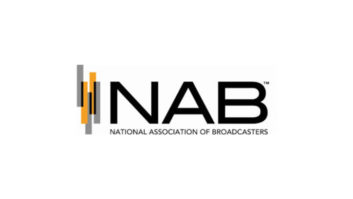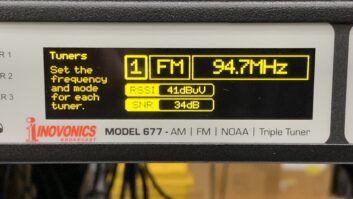Though many broadcast organizations hope for an extension of the EAS CAP conversion deadline, engineering executives of major station groups have been telling me they do expect to meet the Sept. 30 conversion deadline — though it’s clear that an extension would be appreciated even in their cases.
Gary Kline is VP of engineering and IT for Cumulus Media, which has 347 radio stations. While he didn’t commit to an exact completion date, it’s clear Cumulus is proceeding with its conversion process. I turned to him next as part of my continuing series about how broadcast groups are doing in their EAS conversion process.
“Our EAS/CAP-compliant gear is on order and our engineering team throughout the company is on alert,” Kline told me. “All of them participated in the process and are standing by to install and program their gear when it arrives.”
About 70% of Cumulus stations were using Sage for EAS, so the company is continuing with that platform. “Under the new plan, all of our markets will receive new EAS/CAP-compliant decoder/encoder units from Sage but will also make use of their legacy gear whenever possible. We did evaluate all of the brands and technologies out there carefully.” Key considerations for Cumulus included reliability, availability of parts down the road and compatibility with Cumulus’ standardized choice of automation system, Op-X, made by its BSI division.
Cumulus is doing a staged rollout of hardware. Its intial order was placed through dealer Broadcasters General Store.
I asked Kline how the merger with Citadel affects EAS planning.“Very little,” he replied. “Citadel is handling their EAS/CAP rollout independent of Cumulus. We decided early on that the current Sept. 30 deadline would not allow us enough time to handle the entire rollout as one company post-merger.”
As to special considerations, Kline said Cumulus looked at a number of designs for the best way to handle EAS/CAP on local and national levels. “When you are purchasing equipment for several hundred radio stations there are many things to consider, some of which take considerable time to work through. In the end, we think we architected the right plan for the company.”
Finding the lowest-cost technical approach to supplying alerting throughout the platform was important. “There are several different ways you can properly meet the requirements, with each having its pros and cons. Not only did we want to design something that worked well and saved cash, but something that was not obtrusive or complicated to install. As an example, one approach called for most of our engineers to have to rip apart their audio chains. We decided that was not the best way to go, opting to keep the existing wiring infrastructure at each station intact.”
I also asked what Kline thinks of the idea of an extension of the EAS deadline. His comments echo what I’ve heard from others.
“I think like many broadcasters in our situation we would have preferred an extension so that more technical questions could be answered and more testing could be done,” he said. “But more than that, if an extension was going to be granted, we would have appreciated knowing about it sooner. In other words, you can’t tell us on Sept. 25 that there’s a six-month extension, because by then we’ve ordered our gear.
“That being said, in the end this is about improving public safety, and we stand behind that principle firmly. Now that we have our equipment on order and technical implementation plans in place, I would appreciate some extra time to tune and test the new units. Some have suggested a Dec. 31 deadline for testing. I think that makes sense.
“Either way, we plan on being ready and compliant as soon as possible.”
Related:






